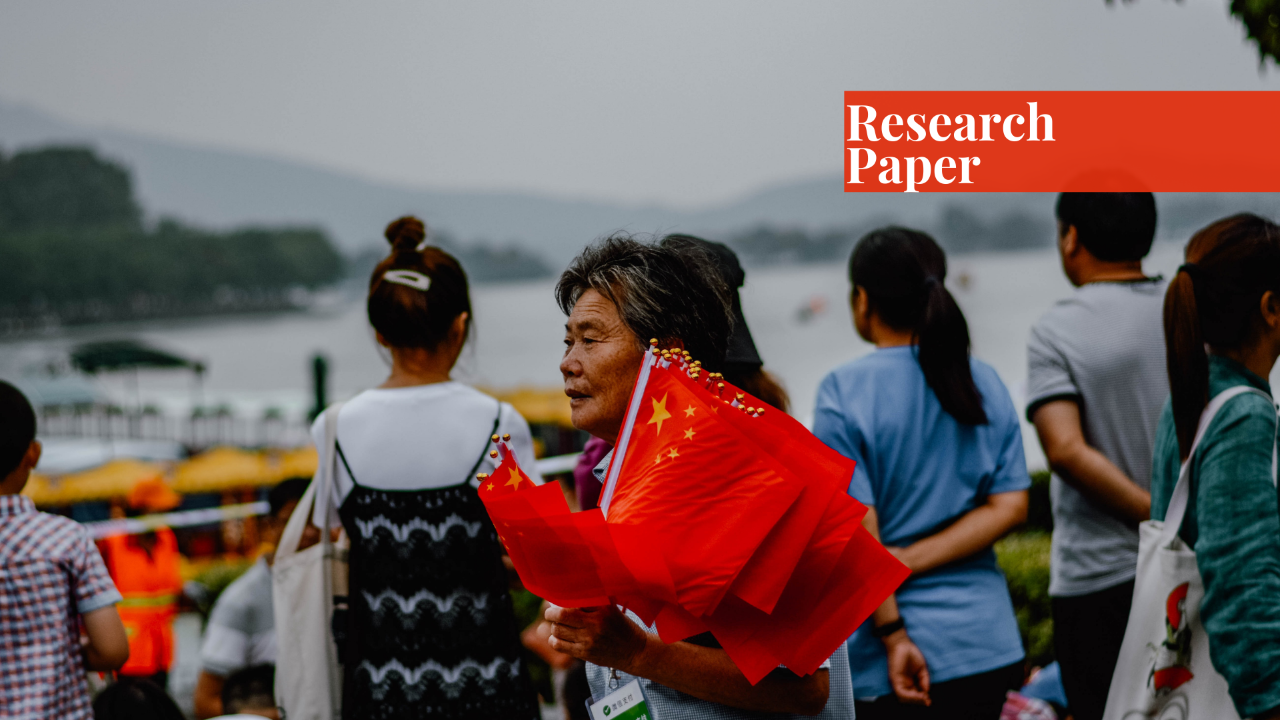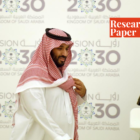Ms Allia Bukhari is a Pakistani journalist and an Erasmus Mundus scholar currently pursuing a Master's at Aarhus University, Denmark. With considerable experience at various Pakistani newsrooms — from The Express Tribune to The News — she has written several articles for national and international publications.
Introduction
In 2015, China and Pakistan officially launched the flagship project of the One Belt and One Road (OBOR) initiative, under President Xi Jinping and Pakistan’s then Prime Minister Nawaz Sharif’s leadership, called the China Pakistan Economic Corridor (CPEC) worth US$46 billion to US$62 billion.
The aim of the initiative supposedly has been to stabilize Beijing’s strategic ally Pakistan and improve its economic state, initiate and expedite infrastructure development, build the deep seaport of Gwadar in southwestern Pakistan, build an 887-kilometer highway, N35, to connect the port city — only 120 kilometers from the Iranian border and a gateway to oil-exporting Gulf countries — with Kashgar in Xinjiang along with creating more job opportunities and fulfilling the developing country’s energy needs.
The initiative was overall lauded in Pakistan — had unanimous support despite provinces questioning the distribution between them — and in China, according to informants and diplomatic experts, was the beginning of China’s “Marching West” strategy (Chan, 2017). This essentially was based on the premise that Beijing enjoyed cordial relations with its neighbors to the West, with the exception of India, and wanted to strengthen them further in order to enhance regional hegemony and counter New Delhi’s and, in the long run, the influence of the United States.
Besides, Pakistan is among the few countries that China can call a ‘friend’ (Shambaugh, 2017). The United States has been a key factor in China’s interest in Asian and South Asian states, especially Pakistan, given its nature of ties with the US first during the Cold War and then post 9/11 with Washington’s ambitions in Afghanistan to deal with the Taliban.
According to Fazal-ur-Rahman (2007), despite Pakistan’s efforts and offers to several countries, including China, to invest in Gwadar and become the region’s transport hub earlier before 2013, Beijing showed ‘marginal interest in the idea’. It only adopted a proactive role after the Obama administration’s ‘pivot to Asia’ policy for the region.
This synopsis, therefore, argues that the mega 15-year long development initiative called the CPEC is a part of China’s soft balancing strategy to help it achieve its geopolitical goals and advance towards a more Beijing-led regional order in the wake of growing influence from India — several South Asian countries like Maldives and Afghanistan have been inclined towards New Delhi and enjoy good relations — and the United States’ containment and rebalance strategy for the region (Sutter et al., 2013).
Moreover, China’s unsettling relations with India, an emerging major power — mainly over border disputes — and Pakistan’s long-standing rivalry and tensions with New Delhi, over the disputed territory of Kashmir, are also some of the reasons why Islamabad and Beijing share good camaraderie.
Research Question
- Has the CPEC diminished the influence of the United States in Pakistan and how effective is China’s soft balancing?
Theory and Literature Review
Mearsheimer (2006) contends that the mightiest powers in a region attempt to establish their hegemony while making sure no other rival power rises. He also underlined the role of other states in the region and how they respond to this influence of the dominant power. Geographically and economically, two big powers exist in the region of South Asia, India and China.
Given the already close alliance between China and Pakistan, Beijing initiated a magnanimous project to further its influence through Pakistan. Part of Xi’s broader Belt and Road initiative, aimed at securing economic leadership and having political leverage over neighboring countries (Cai, 2017). In Pakistan, this ‘soft balancing’ is done through the China Pakistan Economic Corridor.
Pape (2005) already hinted at this “new mechanism” after 9/11 and the United States’ unilateral actions in the wake of it. He affirmed that regional powers are unlikely to use the traditional “hard-balancing” means with regards to the US — as any direct confrontation would be too costly and full of risk — and instead will opt for “soft-balancing measures: that is, actions that do not directly challenge US military preponderance but that use nonmilitary tools to delay, frustrate, and undermine aggressive unilateral US military policies” and undermine Washington’s influence or at least counter it.
Chan (2017) affirms that Beijing has opted for a soft-balancing approach in diplomacy to carve a regional security space and mitigate the threats coming from its east. This also implies threats from the US through its ally countries in the region — mainly India and Japan. Moreover, Beijing is using economic strengthening through CPEC in Pakistan to achieve its foreign policy objectives via other similar projects in the region.
Pape (2005) further argues that a major goal of soft balancing is “to enhance the relative economic power of the weaker state through the creation of a regional trading bloc that will promote intra-regional trade and economic growth for its members only;” in this case the weaker state being Pakistan and an economic growth mechanism being CPEC.
Research Design
In order to gauge the success of China’s soft balancing through CPEC, it is vital to look into its diplomatic “gains” in the region, specifically how Chinese interests or Pakistan’s relations with it are given preference over those with the United States. Pakistan’s relations and diplomatic engagements with China and the United States for the last 5 years — as CPEC officially commenced in 2015 — have been studied and compared for the synopsis.
The official website of Pakistan’s main English language newspaper, Dawn, has been analyzed to understand Washington-Islamabad and Beijing-Islamabad key developments and ties. Following links, https://www.dawn.com/trends/pak-china-ties and , had been used to study China-Pakistan and Pakistan-US related stories 20 each in recent time.
These stories, which cover Pakistan’s foreign office, major Sino-Pak developments, and diplomatic statements, have been used to analyze Pakistan’s evaluation and overall inclination towards China in recent times.
Analysis
Most of the China-Pakistan stories after CPEC have positive connotations and revolve around the strengthening of bilateral ties further while also stressing CPEC’s role as a game-changer for Pakistan. China’s vaccine assistance, development projects, phrases like ‘iron brothers’ and bolstering cooperation in several fields, including defense have been the focus of the foreign office, diplomats’ and government representatives’ statements as evident in the coverage.
Furthermore, Pakistan’s favorable stance towards Beijing in the Hong Kong issue and the absence of condemnation concerning the Uyghur persecution go on to show that post-CPEC China’s influence has worked in Beijing’s favor. On the record, Pakistan abstains from criticizing China and instead sings its praises. Despite always enjoying cordial relations — with the exception of minor hiccups when Islamabad was Washington’s close ally — post-CPEC, China’s role in Pakistan has been solidified further, another step closer towards establishing its regional hegemony.
In the latest developments in the US, ties are discussed in reference to Washington’s smooth exit from Afghanistan. Mutual interests and state sovereignty are emphasized in Pakistan’s foreign policy. “No US bases to be allowed in the country” — a news story citing foreign minister’s remark, for instance, gives a clear picture. Pakistan’s omission from Biden’s climate summit is an issue often stressed.
According to Barnes and Mazetti (2021), Washington continues to focus on a military base in Pakistan for its future operations in Afghanistan and the CIA chief visited Islamabad in an unannounced visit to discuss the matter but the negotiations ended in a deadlock due to Pakistan’s reluctance. An uncertainty and unreliability, therefore, in the Pak-US ties is evident from the recent developments and the analyzed statements of Pakistani diplomats and the government.
Conclusion
Pakistan’s stance towards China has become increasingly positive especially after the China Pakistan Economic Corridor and anti-China discourse. Pakistani diplomats, too, express unflinching solidarity with China and it goes on to show that the economic favours have helped Beijing gain a stronghold in the Islamic country.
This closeness has given China a strategic ally — albeit economically weaker — in the region against India and that helps it firm its hegemony. Pakistan’s support for China has also diminished the US influence in its foreign policy post-CPEC. Beijing’s soft-balancing through CPEC still has some limitations, mostly from an administrative perspective, concerning political instability in Pakistan and an unpredictable law and order situation in Balochistan.
However, overall on a diplomatic level, it has helped China firm its grip on the country, which is clearly evident from Islamabad’s hesitation to condemn the former’s treatment of the Uyghurs — despite it condemning atrocities against Muslim communities elsewhere — and in its reluctance to trust the United States.
References
- Cai, P. (2017). Understanding China’s Belt and Road Initiative. Lowy Institute.
- Chan, L. (2017) Soft balancing against the US ‘pivot to Asia’: China’s geostrategic rationale for establishing the AIIB, Australian Journal of International Affairs, 71:6, 568-590, DOI: 10.1080/10357718.2017.1357679
- Mazzetti.M and Barnes, J,E. (2021). CIA scrambles for a new approach in Afghanistan. The New York Times. https://www.nytimes.com/2021/06/06/us/politics/cia-afghanistan-pakistan.html
- Mearsheimer, J. (2006). China’s Unpeaceful Rise. Current History, 105, 160-162
- Pape, R. (2005). Soft Balancing against the United States. International Security, 30(1), 7-45.
- Rahman, F. (2007). Targeted Attacks on Chinese: Myth and Reality. Strategic Studies, Vol. 27, no. 4.
- Sutter, R,G. Brown, M,E. Adamson, J,A. Mochizuki, M,M. and Ollapally, D. (2013).Balancing Acts: The U.S. Rebalance and Asia-Pacific Stability. George Washington University. https://www2.gwu.edu/~sigur/assets/docs/BalancingActs_Compiled1.pdf
- Shambaugh, D. (2017). Dealing with China: Tough Engagement and Managed Competition. Asia Policy, (23), 4-12. https://www.jstor.org/stable/24905138
If you want to submit your articles and/or research papers, please check the Submissions page.
The views and opinions expressed in this article/paper are the author’s own and do not necessarily reflect the editorial position of Paradigm Shift.



















